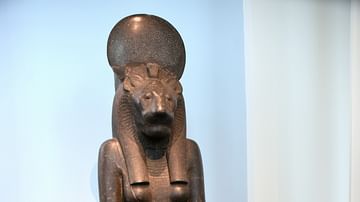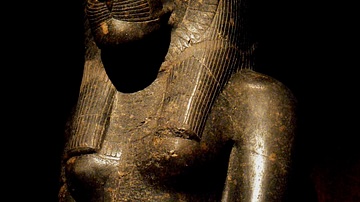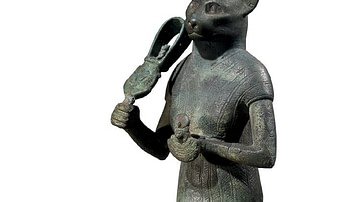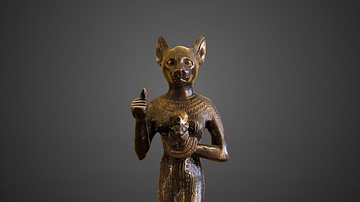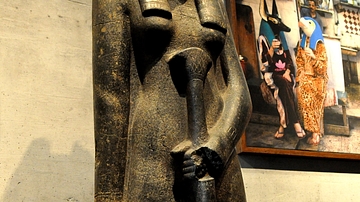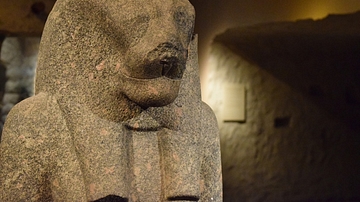Illustration
This bronze fragment (with gold insoles) was part of a Menat (also Minet) necklace. On the right, a child-god, wearing a rearing cobra (uraeus) on his head stands before the goddess Mut-Sekhmet-Bastet. The child-god proffers a sistrum to the goddess and holds a Menat as a symbol of appeasement. The goddess is seated and is associated with the god Re.
The hieroglyphic signs mention the name of the vizier Harsiesi; he was a High Priest of Amun in Thebes and ruled as an antagonist to the Libyan ruler Takelot I (of the 22nd Dynasty) in Lower Egypt. The central scene is flanked by plants of Upper and Lower Egypt (topped by their corresponding animal), representing their union.
From Thebes, Egypt. Third Intermediate Period, 22nd (Bubastite or Libyan) Dynasty, c. 870 BCE. It is on display at the Neues Museum, Berlin, Germany.
About the Author
Cite This Work
APA Style
Amin, O. S. M. (2019, September 07). Fragment of a Menat Necklace. World History Encyclopedia. Retrieved from https://www.worldhistory.org/image/11141/fragment-of-a-menat-necklace/
Chicago Style
Amin, Osama Shukir Muhammed. "Fragment of a Menat Necklace." World History Encyclopedia. Last modified September 07, 2019. https://www.worldhistory.org/image/11141/fragment-of-a-menat-necklace/.
MLA Style
Amin, Osama Shukir Muhammed. "Fragment of a Menat Necklace." World History Encyclopedia. World History Encyclopedia, 07 Sep 2019. Web. 15 Apr 2025.



